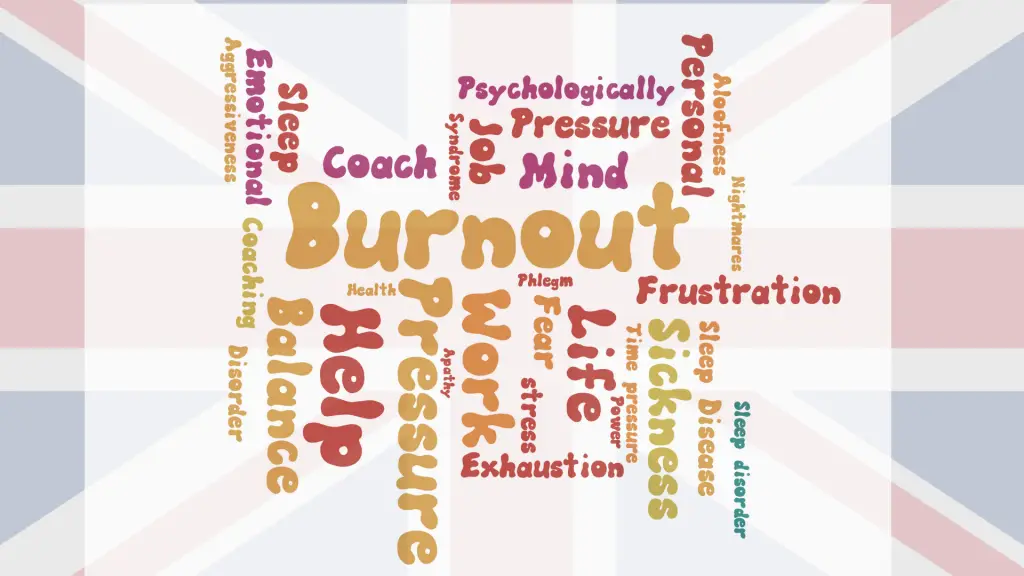At Salusphere Global, we are deeply committed to fostering healthier, more resilient workplaces. After thoroughly reviewing Mental Health UK’s 2025 Burnout Report, it’s clear that addressing burnout is no longer just a workplace issue, it’s a societal imperative. The report sheds light on the persistent challenges of stress and burnout, their far-reaching impact on individuals and organisations, and the critical need for proactive, tailored strategies. We believe this report provides invaluable insights for employers, employees, and policymakers to create environments where mental well-being is prioritized and supported. Together, we can drive meaningful change and build thriving communities.
The report spans 45 pages of invaluable insights, and we’ve broken it down into bite-sized summaries to make it easier for you to digest and act on the key takeaways
Mental Health UK: The Burnout Report 2025 – Summary Overview:
What is Burnout?
- Defined by WHO as an occupational phenomenon, burnout is a state of physical, emotional, and mental exhaustion due to prolonged stress.
- Symptoms include fatigue, insomnia, emotional detachment, cynicism, reduced productivity, and strained relationships.
Key Findings:
- High Stress Levels Persist
- 91% of UK adults reported experiencing high or extreme stress in 2024.
- Younger workers (18–24) are disproportionately affected, with 28% taking time off due to health challenges.
- Workplace Challenges
- Only 32% of workplaces have plans to identify and prevent burnout.
- One in five employees admitted their productivity was affected by stress but did not adjust work hours or seek help.
- Just 46% of workers feel their manager has the skills to support mental health.
- Ripple Effects
- Burnout impacts sleep (64%), diet (45%), self-confidence (44%), and personal relationships (40%).
- High workloads, fear of redundancy, and unpaid overtime are leading stressors.
- Generational and Demographic Trends
- Younger employees are less comfortable discussing stress with managers, with confidence dropping from 75% to 56%.
- Women and those in lower-income brackets report higher levels of stress and burnout risks.
Recommendations for Employees:
- Recognise burnout signs and seek help early.
- Create a personal wellness plan and set clear work-life boundaries.
- Communicate challenges to managers and leverage workplace support.
Conclusion:
Burnout is not just a workplace issue; it is a societal challenge. Addressing it requires collaborative efforts from employers, employees, and policymakers. Proactive mental health strategies are essential for creating workplaces where people thrive
Expanded Definition of Burnout (From The Burnout Report 2025)
Burnout is classified by the World Health Organisation (WHO) as an occupational phenomenon, distinct from a medical or mental health condition. It is recognised as a syndrome, a collection of symptoms linked to prolonged and unmanageable workplace stress.
Burnout goes beyond the short-term effects of stress, which can temporarily impact sleep, energy, and emotions. While stress can be managed in the context of its cause, burnout results in a deeper level of emotional, mental, and physical exhaustion that significantly impairs one’s ability to function.
Key Characteristics of Burnout:
- Physical Symptoms: Chronic fatigue, insomnia, frequent headaches, muscle pain, gastrointestinal issues, and lowered immunity.
- Emotional Symptoms: Feelings of helplessness, self-doubt, cynicism, detachment, and persistent worry or anxiety.
- Behavioral Symptoms: Procrastination, reduced productivity, withdrawal from responsibilities and social interactions, and reliance on coping mechanisms such as overeating, alcohol, or drugs.
Scope Beyond the Workplace:
Although burnout is commonly associated with workplace stress, it is often exacerbated by life pressures such as caregiving, parenting, or managing chronic health conditions. This broad context underscores its pervasive impact, influencing not only professional performance but also personal relationships and overall wellbeing.
Burnout develops gradually, often unnoticed until its effects are overwhelming. It erodes protective habits, such as maintaining a healthy diet, getting quality sleep, and building meaningful social connections, leaving individuals in a vulnerable state both mentally and physically.
Summary of Brian Dow’s Introduction (The Burnout Report 2025)
Brian Dow, Chief Executive of Mental Health UK, highlights the persistent challenges of burnout despite modest progress in managing workplace stress. He acknowledges improvements, such as increased awareness and preventive measures, but stresses that systemic issues like NHS delays and economic pressures continue to amplify stress levels.
Key points include:
- Younger workers face significant challenges, including decreased confidence in discussing stress with managers and a higher likelihood of taking time off due to health concerns.
- Burnout extends beyond the workplace, affecting personal relationships, sleep, and overall well-being.
- Employers must prioritise mental health to foster productivity and resilience, while policymakers need to address broader systemic issues exacerbating stress.
Dow calls for a united effort across workplaces and society to combat burnout, urging proactive measures to create environments where people can thrive both professionally and personally.
Summary of Executive Summary (The Burnout Report 2025)
The 2025 Burnout Report highlights the ongoing challenges of stress and burnout in the UK workforce, despite some signs of progress. Key findings include:
- Stress Levels Remain High: 91% of UK adults experienced high or extreme stress in the past year, with younger workers (18–24) disproportionately affected.
- Workplace Gaps: Only 32% of workplaces have plans to spot and prevent burnout, leaving many employees feeling unsupported.
- Impact Beyond Work: Burnout disrupts sleep (64%), diet (45%), and relationships (40%), showing its far-reaching effects.
- Generational Divide: Younger workers are less comfortable discussing stress with managers, with confidence dropping from 75% to 56%.
The report emphasises that addressing burnout requires action from employers, policymakers, and individuals. Proactive mental health strategies, workplace culture shifts, and systemic changes are vital to reducing burnout’s impact on individuals and society.
Summary of Managing Stress and Pressure (The Burnout Report 2025)
The 2025 report highlights ongoing challenges in managing stress and pressure, despite slight improvements in overall resilience among UK workers. Key points include:
Ability to Manage Stress:
- 75% of UK adults feel able to manage stress, up from 73% in 2024, but nearly 1 in 4 (23%) still struggle.
- Women (26%) and younger adults (18–24, 34%) are more likely to feel unable to manage stress compared to men (20%) and older adults (55+, 18%).
Regional and Demographic Insights:
- Workers in the North of England and the Midlands feel most capable of managing stress (76%).
- Scottish workers are least likely to feel in control, with 26% reporting difficulty managing stress.
- Parents (80%) are better at managing stress than non-parents (69%), potentially due to experience with balancing responsibilities.
Recommendations for Stress Management:
- Individuals should identify stress triggers and adopt coping strategies, such as creating wellness plans, setting boundaries, and engaging in self-care.
- Employers are encouraged to offer tailored mental health support and promote open conversations about well-being to help employees build resilience.
The findings reveal that while some progress has been made, many individuals still face barriers to effectively managing stress, underscoring the need for sustained personal and workplace efforts.
Summary of the Impact of Pressure and Stress on Productivity (The Burnout Report 2025)
The 2025 Burnout Report reveals how stress and pressure significantly impact workplace productivity and employee behavior:
Key Findings:
Reduced Productivity:
- 21% of workers admitted their performance was negatively affected by stress, yet many did not adjust work hours or take time off.
- Women (23%) were more likely than men (19%) to report productivity impacts without seeking adjustments.
Time Off Due to Stress:
- Nearly 1 in 10 workers took short-term sick leave (8%) or long-term sick leave (4%) due to high stress levels.
- Younger workers (18–24) were most likely to require time off, with 19% reporting the need for unpaid leave or adjusted hours.
Presenteeism and Silence:
- 19% of workers chose not to disclose their high stress levels to employers, reflecting stigma and fear of judgment.
Demographic Trends:
- Workers in higher-income groups (ABC1) were more likely to report productivity declines (24%) compared to those in lower-income groups (16%).
- Stress-related absenteeism and performance issues were most prevalent among younger and field-based workers.
Conclusion:
The findings highlight a concerning culture of presenteeism, where employees prioritise attendance over addressing stress, leading to decreased productivity. Employers are urged to create supportive environments that encourage open communication, normalize time off for mental health, and provide targeted interventions to manage stress effectively.
Summary of Workplace Mental Health Support and Employer Ability to Support (The Burnout Report 2025)
Workplace Mental Health Support
Limited Plans for Burnout Prevention:
- Only 32% of organisations have plans to identify and prevent burnout, leaving 45% of workers without adequate support.
- Younger workers (18–24) are more likely to report their workplaces have plans in place (41%) compared to older workers (30%).
Stigma Around Mental Health:
- Despite a slight increase in comfort discussing stress with managers (60% in 2025 vs. 57% in 2024), younger workers’ confidence dropped sharply (from 75% to 56%).
- One-third of workers (32%) still do not feel comfortable raising stress-related concerns.
Recommendations for Employers:
- Implement tailored wellbeing action plans and organization-wide strategies to address workplace stress.
- Encourage open discussions on mental health, normalize taking time off for stress, and train managers to provide better support.
Overall Conclusion of (The Burnout Report 2025)
The Burnout Report 2025 highlights the urgent and pervasive issue of burnout, emphasising its profound impact on individuals, organisations, and society as a whole. Despite increased awareness and incremental improvements, systemic gaps in workplace mental health support, rising economic pressures, and cultural stigmas continue to fuel stress and exhaustion among UK workers.
Key takeaways underscore the critical role of employers in proactively addressing burnout by:
- Creating open, supportive workplace cultures.
- Implementing structured mental health strategies.
- Training managers to identify and support employees at risk.
Equally, broader societal efforts, including access to health services and addressing economic challenges, are essential to alleviate external pressures contributing to burnout.
Ultimately, the report calls for collective action from employers, employees, and policymakers to foster resilience, prioritize mental well-being, and create environments where individuals can thrive personally and professionally. Addressing burnout is not just an ethical responsibility, it is a strategic imperative for sustainable growth and productivity.
Contact us for informal chat or email in**@**************al.com
Subscribe for Essential Updates for a Healthier Workplace – delivers the latest insights, best practices and regulatory updates. Subscribe Here
_________________________________________________________________________________________________________________________________
#Burnout2025 #MentalHealthAwareness #WorkplaceWellbeing #EmployeeSupport #StressManagement #MentalHealthMatters
#WorkplaceCulture #BurnoutPrevention #EmployeeWellbeing #WorkplaceMentalHealth #HealthAndProductivity #LeadershipTraining #ResilientWorkplace #BusinessWellbeing #SustainableGrowth



